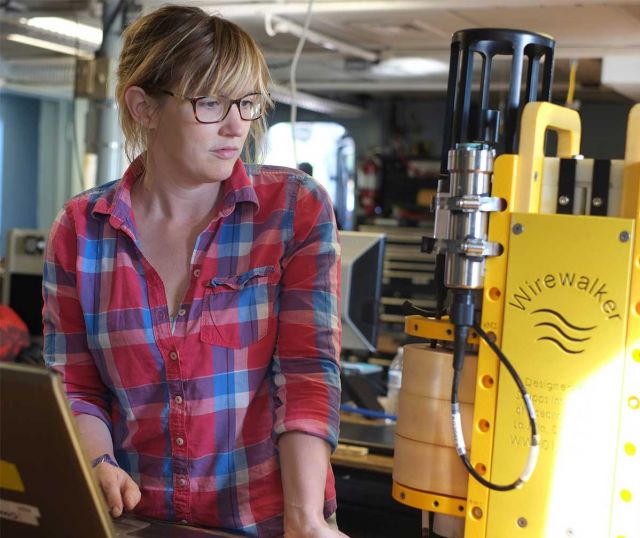High Frequency Migrations by Zooplankton

Speaker
Melissa Omand
Assistant Professor, Graduate School of Oceanography
University of Rhode Island
Abstract
Sometimes it takes a naive pair of eyes to notice something new. For my seminar at UCSB, I will present a physical oceanographer’s perspective on a novel observation of zooplankton behavior. It is well known that many zooplankton migrate on a diel cycle; moving toward the depths as the sun rises and upward as it sets. We also know that these migrations can occur in response to other processes that modify local light intensity, such as storms, eclipses and full moons. During the 2018 EXPORTS cruise in the North Pacific I noticed small-scale (10s of meters) migrations of a deep, daytime acoustic scattering layer centered at 300m, that were highly correlated with high-frequency variability in the surface PAR - most likely due to clouds passing overhead. Using objective mapping techniques, it was clear that these animals were swimming constantly in response to even the tiniest or shortest variations in light. On some days, the high-frequency migrations (HFM) were so vigorous, that we estimate the net distance traveled in response to clouds, was 80% of the distance traveled during the diel part of the migration. This has implications for the respiration rates of these animals at depth, and highlights the powerful evolutionary adaption for visual predator avoidance. To our knowledge, this phenomenon has not yet been described in the literature.
Speaker Bio
Melissa earned a B.Sc. in Physics from the University of Guelph in 2003. After graduation she worked on simulations of x-ray induced emissions by Martian rocks (observed by the NASA rovers Spirit and Opportunity) in the Guelph PIXE group of Dr. Iain Campbell. In 2004 she began PhD program in Physical Oceanography at Scripps Institution of Oceanography, under advisors Drs. Falk Feddersen and Peter Franks. Her graduate work focused upon the mechanisms of transport and mixing of nutrients and red tides organisms in the inner shelf and surfzone. She earned a PhD in 2011 and moved to Cape Cod, where she was a postdoctoral associate with Dr. Amala Mahadevan at Woods Hole Oceanographic Institution. Here, she expanded her interests to blue water - writing papers on nutrient distributions, nutrient-density relationships, attenuation of sunlight, sinking rates of marine snow, and eddy-driven export of particulate carbon in the ocean. Since January 2015, she has held a faculty position at the University of Rhode Island’s Graduate School of Oceanography. She currently advises 5 graduate students and her research focuses on making observations and tools to improve our understanding of the biological carbon pump.